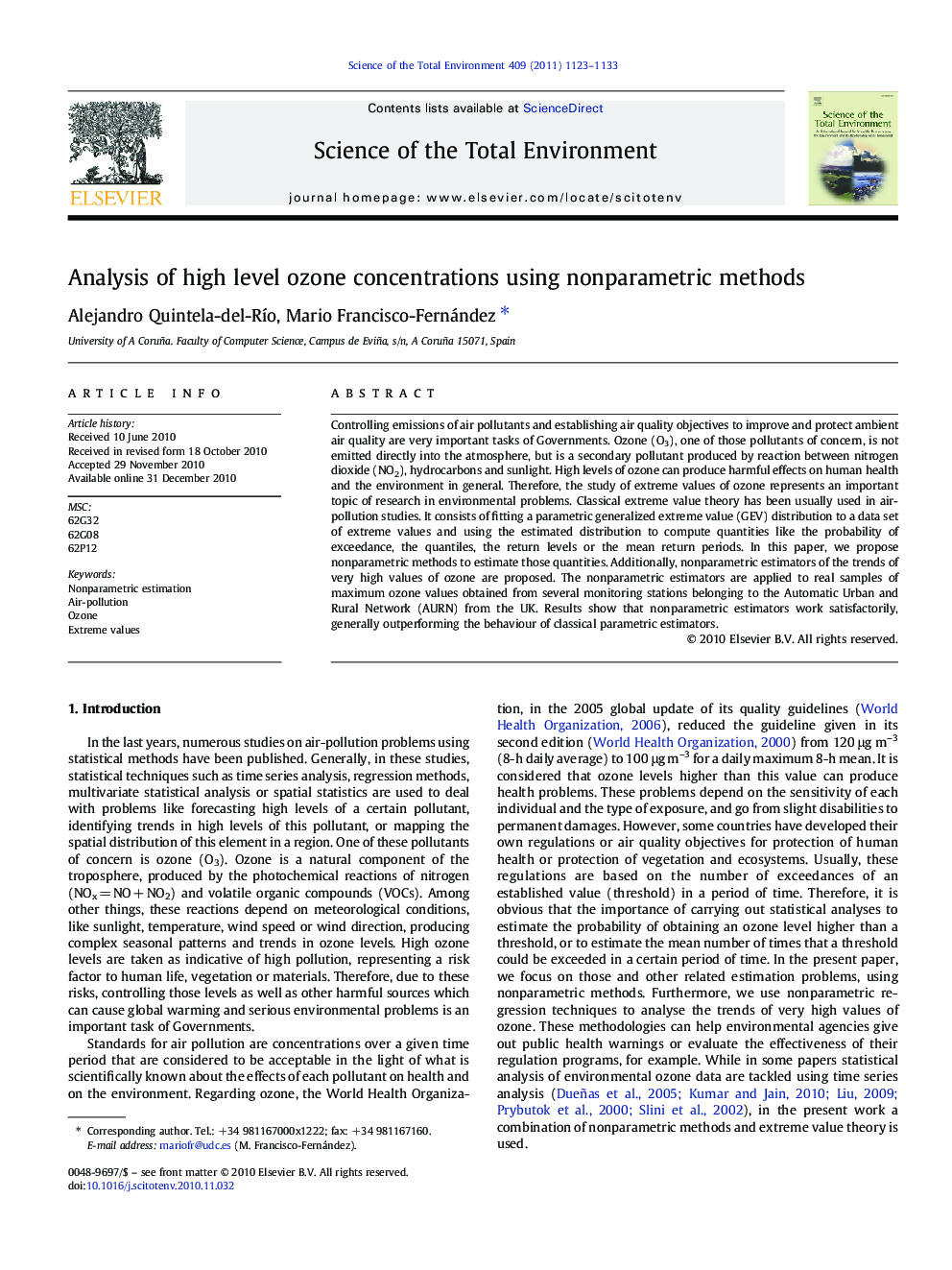| Article ID | Journal | Published Year | Pages | File Type |
|---|---|---|---|---|
| 4430332 | Science of The Total Environment | 2011 | 11 Pages |
Controlling emissions of air pollutants and establishing air quality objectives to improve and protect ambient air quality are very important tasks of Governments. Ozone (O3), one of those pollutants of concern, is not emitted directly into the atmosphere, but is a secondary pollutant produced by reaction between nitrogen dioxide (NO2), hydrocarbons and sunlight. High levels of ozone can produce harmful effects on human health and the environment in general. Therefore, the study of extreme values of ozone represents an important topic of research in environmental problems. Classical extreme value theory has been usually used in air-pollution studies. It consists of fitting a parametric generalized extreme value (GEV) distribution to a data set of extreme values and using the estimated distribution to compute quantities like the probability of exceedance, the quantiles, the return levels or the mean return periods. In this paper, we propose nonparametric methods to estimate those quantities. Additionally, nonparametric estimators of the trends of very high values of ozone are proposed. The nonparametric estimators are applied to real samples of maximum ozone values obtained from several monitoring stations belonging to the Automatic Urban and Rural Network (AURN) from the UK. Results show that nonparametric estimators work satisfactorily, generally outperforming the behaviour of classical parametric estimators.
Research Highlights► Nonparametric estimation of high level ozone concentrations. ► Nonparametric quantile trend estimation through years. ► Comparison of nonparametric and parametric estimators based on the GEV distribution.► Statistical analysis of ozone concentrations in the UK.
